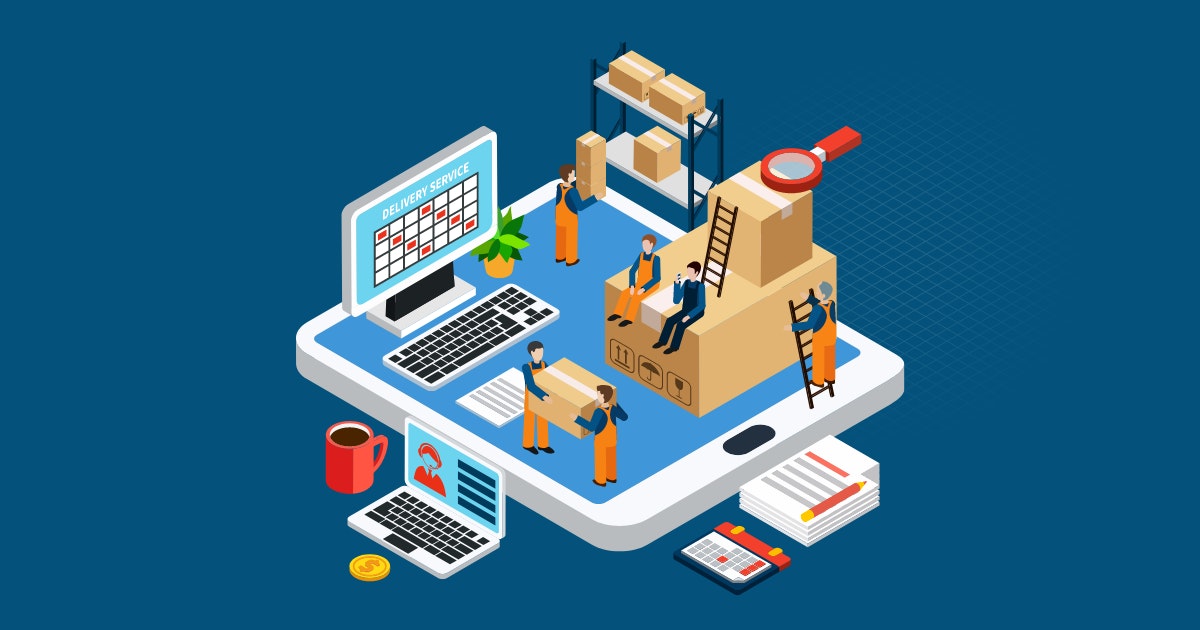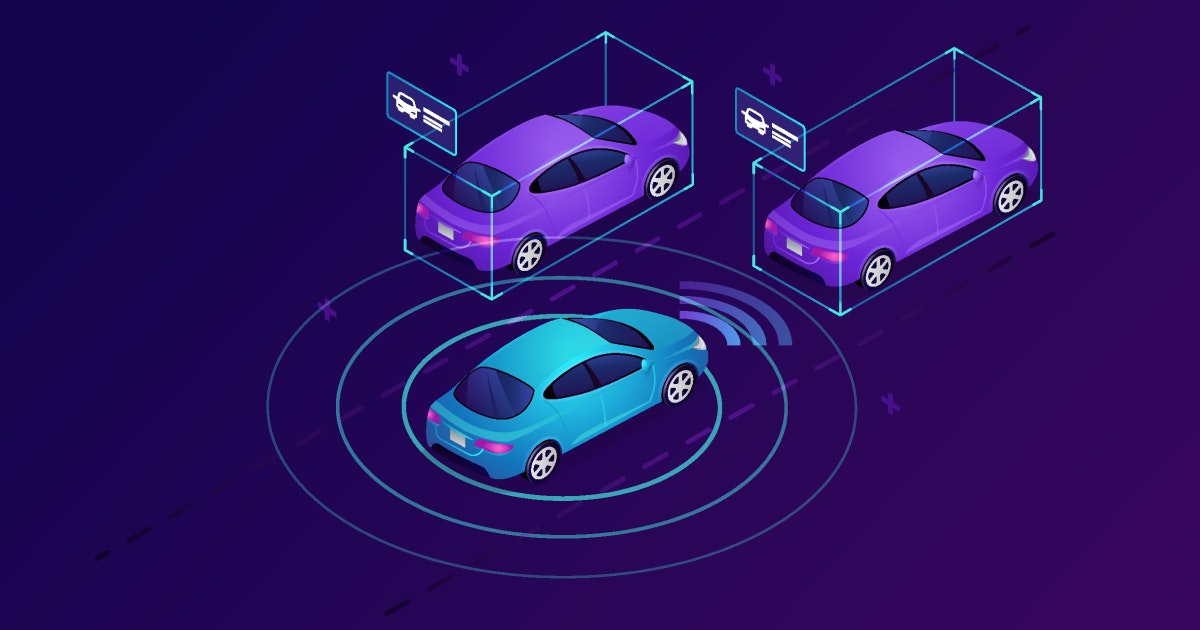Table of Content
The eCommerce ecosystem witnessed an enormous boom after the pandemic began in March 2020. As people were confined to their homes, many retailers had no other option but to resort to the online medium to deliver uninterrupted services during bleak times.
Now even as the world is limping back to normalcy, businesses have made their mark online, and they do not see any reason why they should only sell offline.
Having said that, the rise of eCommerce sales is undoubtedly good news when it comes to revenue reports. But as retailers expand, so does the need for efficient inventory management. Keeping track of large volumes of inventory is a humongous task.
To ensure that business goes as usual, warehouses have turned to the Internet of Things. Yes, that is correct. Many global brands such as Alibaba, DHL, and Amazon are deploying the technology for inventory optimization.
The thing is, IoT makes managing stocks and supplies more swift, efficient, and accurate. This digital transformation of data management and tracking has revolutionized every aspect of the entire supply chain management process.
Recent research shows that only 1/3rd of manufacturers use inventory management software, and the rest rely on Excel sheets and paper, which are not efficient at all. IoT-based applications have the power to redefine legacy inventory management systems.
Since manual human-based methodologies are prone to errors, IoT comes in handy for the accurate handling of inventories. But before we study how IoT is changing this domain, let us begin with a brief introduction to IoT and smart inventory management.
What is IoT?
Simply put, it refers to the physical devices embedded with sensors that process software and other technologies, connecting and exchanging data with other devices over the internet. IoT enables a balanced approach between machines and humans.
In other words, this technology connects every product you can think of, such as coffee makers, washing machines, headphones, and wearable devices with little human contact.
Here is a fun fact: The number of IoT-installed devices will exceed 35.82 billion in 2021 and reach 75.44 billion by 2025. This upward trend clearly shows how important IoT has become in our daily lives and for various business purposes.
IoT in inventory management in nutshell
IoT in inventory management refers to the use of interconnected devices and sensors to monitor, track, and manage inventory in real time.
The traditional ways of keeping inventory details are outdated and often laden with human and factual errors. Deploying an IoT-based warehouse management solution for this is a fundamental business requirement.
AI-powered IoT devices automate the entire warehouse management process. They accumulate information from different sources and analyze the data to help improve warehouse operations.
For instance, companies install IoT sensors in their facilities to monitor the movement and use of materials inside their facilities.
They also use shelf sensors to transmit real-time inventory information to the cloud. Ensuring inventory levels and equipment locations helps eliminate expensive and time-consuming mistakes.
Plus, this also enables end customers to have accurate real-time information about an item's availability and the expected delivery date.
On the other hand, as a retailer, you would always know which out-of-stock items are and accordingly improve customer service and your supply chain.
Now that we have understood IoT and its role in smart inventory management, in brief, let us delve deeper into how the technology helps in this domain:
Enhance Your Supply Chain with Custom IoT Integration!
Explore ServicesApplications of IoT in inventory management
IoT keeps track of the item's location with the corresponding ID, visualizes the findings and displays the updates in real-time.
In addition, it allows the warehouse management staff to monitor the stock on the fly. The technology maximizes productivity while ensuring efficiency. Here is a list of all the IoT applications in inventory management you should know about:
1. Real-time tracking and monitoring systems
IoT apps provide real-time status of the inventory en route. That means you can get the exact location and reason for the delay (if there is one) in transit, which will help in emergency planning and making alternative arrangements.
Courier companies, eCommerce brands, and other vendors use live tracking and monitoring solutions powered by the Internet of Things. IoT reduces delays and communication gaps to a great extent, thus improving customer service.
With 5G data transmission around the corner, businesses are experimenting with micro-tracking solutions that facilitate individual tracking of each courier item or product, thus optimizing their supply chain.
It is possible with only those products with a physical RFID chip or a barcode stamped on the packaging or on the product itself. In a nutshell, IoT allows accurate and timely product deliveries with minimal human errors.
2. Automated data collection with RFID tags
Radio Frequency Identification or RFID and cloud-based GPS enable micro-tracking in the inventory management process. These are advanced 5G wireless data transmission technologies for efficient and automated data collection.
Some of the advantages of RFID include:
- RFID tags eliminate delay-causing elements such as scanning stations for smooth transit and supply chain operations.
- RFID gives accurate information on location, traffic, time of arrival, and so on the package. Meaning, it can predict the exact time at which the package will arrive.
- RFID tagging can highlight the most crucial package in the shipment to be opened first on the delivery point.
The IoT inventory management solution minimizes human interference by leveraging automation. Data collection at entry and exit points through a scanner helps extract accurate data, which can be further used for supply chain tracking and business planning. IoT saves time and improves the productivity of the inventory managers.
3. Efficient warehouse and logistics management
The warehouse management systems enable the optimum utilization of available resources to ensure hassle-free and productive day-to-day functioning of the facility.
A typical warehouse management process involves multiple jobs such as tracking new and existing stocks, human resource management, logistics management, and so on.
Businesses across industries are applying performance enhancement measures by leveraging multiple IoT-enabled tools and applications to turn warehouses into smart facilities with drones, robots, and Blockchain technology.
Along with boosting supply chain efficiency, the Internet of Things devices can gather and provide open communication between the logistics stakeholders and warehouse managers.
A Guide On The Top 17 IoT Operating Systems For IoT Devices in 2022 And Beyond
Learn More4. Performance enhancement with predictive maintenance
IoT automates data generation, and predictive maintenance analytics organizes those data sets in segments and clusters for warehouse performance and inventory optimization.
Such analytics gathers data from sensors placed at places where the Internet of Things devices are used. IoT-based predictive analytics integrated with ERP systems provide exact data that leads to efficient record maintenance and fewer warehouse management mistakes.
5. Optimized fleet inventory management system
Get complete control over your fleet inventory in transit with IoT devices. The technology gives round-the-clock connectivity and real-time updates about fleet location, expected time of arrival, reasons for the delay, and so on.
IoT can be a game-changer for companies with large fleets and frequent transit requirements. Real-time tracking and visibility of the fleets reduce cases of theft and unauthorized entry.
The fleet monitoring IoT service allows businesses to identify load discrepancies and inform logistic stakeholders faster. Thus IoT helps in efficient fleet management, better communication, and saves time and money for the businesses involved.
6. Higher accuracy in forecasting lead times
The Internet of Things-powered devices give accurate data that helps in improved forecasting about lead times. That means businesses can assess the time needed to assemble all the necessary manufacturing parts.
IoT also provides information on the causes for delays in assembly lines and what can be removed or changed to improve the performance.
Identifying forecasting bottlenecks is crucial in operations because if left unattended, these can result in the assembly line and manufacturing process-related problems.
In addition, IoT-based inventory management solutions can forecast weather patterns. This information can be utilized for logistical purposes to ensure a better delivery system.
7. Smooth Augmented Reality (AR) and Robotics integrations
AR and robotics-powered IoT apps bring operational efficiency to the fore by automating tasks such as moving heavy objects and pallets, driving forklifts, and so on. You must have already seen robots doing these jobs in various manufacturing and construction companies.
In addition, IoT apps facilitate the seamless storage, handling, and shipping of inventory accurately without any human intervention.
Robotics is an extensive field — mind you, an upcoming one — which contributes to inventory management through multiple tools and technologies, including Autonomous Guided Vehicles (AGV), self-driving forklifts, and automatic mobile robots. Robotics also includes RFID sensors, LiDAR scanners, and navigation sensors.
8. Reduced loss and equipment damage in supply chain
Businesses can track and monitor equipment with accuracy through the Internet of Things devices. The technology saves time by finding the product or equipment and ensures optimum utilization of resources.
Real-time data prediction based on verified information helps minimize the loss due to unused inventory and maintenance of malfunctioning equipment.
As correct and verified information is required to make the perfect planning strategies for the business, IoT-enabled devices give you an exact input for making crucial inventory management decisions.
9. Transparent regulatory compliance
IoT powered with Blockchain technology streamlines inventory management compliance and makes supply chain management more transparent. The Internet of Things systems offer a range of benefits for transparent regulatory compliance and contribute towards operational and business excellence, such as:
- Real-time data visibility
- Sensor-driven decision analytics
- Automated system updates and upgrades
- Logistics monitoring via predictive analytics
- Minimum human interference and manual work
- Lesser dependence on the traditional infrastructure
- Automatic and centralized data tracking and collection
10. Smart IoT wearables
The Internet of Things-enabled wearables leverage machine learning algorithms and measure data through connected sensors on the cloud. Wearables can be used for real-time visibility of key performance indicators.
IoT wearables collect, share, and receive data. These gadgets connect warehouses and inventory partners for seamless communication without any lags.
There are several types of wearables available such as smartwatches, wrist bands, body straps, eyewear, footwear, and so on.
These devices are cost-efficient, safe, provide faster real-time outcomes, and are extensively used by warehouses, delivery companies, and eCommerce organizations globally. Talk about smart warehouse management!
11. Real-time data from IoT devices
IoT applications ensure open communication between multiple stakeholders and processes in the inventory management system. Most of the disputes, delays, and mismanagement happen to generate from a communication gap.
By utilizing IoT technology, businesses can get real-time data, thus enabling transparent communication. This data helps in fact-based analysis with little room for error as the process is completely automated thanks to the numerous IoT servers, sensors, and devices at play.
IoT In Supply Chain Management: 6 Benefits To Know
Learn MoreInventory IoT sensors: Key to smart inventory management
Inventory IoT sensors play a crucial role in providing the data needed for smart inventory management. These sensors include:
1. RFID (Radio Frequency Identification) tags
Used to identify and track products in warehouses or stores, RFID tags enable real-time visibility into stock levels and product movement.
2. GPS sensors
Ideal for tracking the location of inventory in transit, GPS sensors provide valuable data to ensure timely delivery and reduce the risk of lost or misplaced shipments.
3. Temperature and humidity sensors
Especially important for industries dealing with perishable goods, these sensors monitor environmental conditions in real time to prevent spoilage or damage.
4. Weight sensors
Weight sensors measure the quantity of inventory remaining in bins or on shelves, helping businesses monitor stock levels and plan reorders accurately.
IoT for inventory management: Opportunities and challenges
IoT is an intelligent concept to implement for efficient inventory management. There is no second thought on that, given its numerous benefits and advantages. But along with opportunities, IoT also has some challenges which need to be addressed.
Let us take a quick glance:
One of the biggest reasons businesses still hesitate to invest in the comparatively newer technology infrastructure is the safety and security of the products and customer data. Cyber threats are common in any internet-connected device.
Blockchain-powered IoT apps solve this issue with a multi-layered security system. Thus, businesses can secure their data without worrying about a data breach.
Another challenge for inventory management is handling logistics efficiently. Companies have to bear huge losses due to theft, spoilage, intrusion, and so on. IoT-enabled devices are well equipped to minimize losses for the industry through the likes of micro-tracking.
However, there is a silver lining. Adopting the IoT technology to optimize the warehouse can be cost-efficient, boost the facility's overall performance, and automate real-time data analysis, which would impact revenues for the better — directly and indirectly.
However, businesses need sufficient data to analyze and strategize plans. They need data for inventory management, logistical operation, and human resource management.
Thankfully, IoT can help with real-time tracking, data entry at entry and exit points, deploying robotics for multiple jobs, and so on.
The technology presents an opportunity for businesses to replace traditional inventory management systems and give their operations a much-needed push. IoT implementation with a planned approach will improve productivity and boost their bottom lines.
IoT systems improve traceability and monitoring of products and help in compliance management.
Popular brands that have implemented IoT for inventory management
1. Amazon
Amazon runs semi-automated warehouses where robots perform basic tasks such as scanning barcodes, a few steps of the packaging process, and moving items from one place in the warehouse to another. A typical Amazon facility employs more than four hundred robots. This not only reduces reliance on humans but also helps in running the warehouse smoothly.
2. DHL
International courier and package delivery service company DHL has deployed IoT technology in its logistical processes and warehouses. It uses robots, drones, autonomous vehicles, and smart glasses to identify products and sort through parcels.
In addition, DHL recently partnered with CISCO to integrate IoT in their supply chain system to observe activities in real time. This project is, however, still in development.
3. Alibaba
Chinese eCommerce giant Alibaba launched a fully automated warehouse run by robots in 2018 for efficient data management during 'The Singles Day,' Alibaba's global shopping fest.
The brand uses IoT for error-free product deliveries in a shorter span and optimum resource utilization through complete warehouse automation.
Jack Ma, the president of the eCommerce conglomerate, has lauded the excellent prospects of IoT-powered inventory data in retail and logistics.
Modernize Your Inventory Control with Advanced IoT Solutions!
Let's Get StartedImplementing IoT in inventory management
Implementing IoT in your inventory management process may seem daunting, but with the right approach, it can lead to significant benefits. Here are key steps to get started:
1. Assess your current inventory challenges
Identify the specific pain points in your inventory process, such as stockouts, overstocking, manual errors, or high operational costs. This will help you define the areas where IoT can offer solutions.
2. Choose the right IoT technology
Based on your needs, select the IoT devices and sensors that will be most effective. For example, RFID tags for retail environments or temperature sensors for perishable goods.
3. Integrate IoT with your existing systems
Ensure that the IoT solution integrates seamlessly with your current inventory management software. This allows for smoother operations and real-time updates across all platforms.
4. Train your team
Make sure that warehouse staff and managers are trained on how to use IoT devices and interpret the data provided by them.
5. Monitor and optimize
After implementation, continuously monitor the performance of your IoT system. Use data analytics to optimize your inventory management and improve accuracy and efficiency over time.
Over to you
An IoT-enabled warehouse management solution is indeed helpful in tracking and monitoring logistical activities, providing accurate data and updates on projects in progress in real time.
The technology offers an opportunity to improve inventory management and enable manufacturers to optimize their business performance and increase revenues.
You can also improve your supply chain visibility and invest in IoT to transform your traditional inventory management system into modern architecture.
Book a Free 45-minute Consultation with Our IoT Experts Today! Get a customized roadmap and strategies to leverage IoT for smart inventory management.







